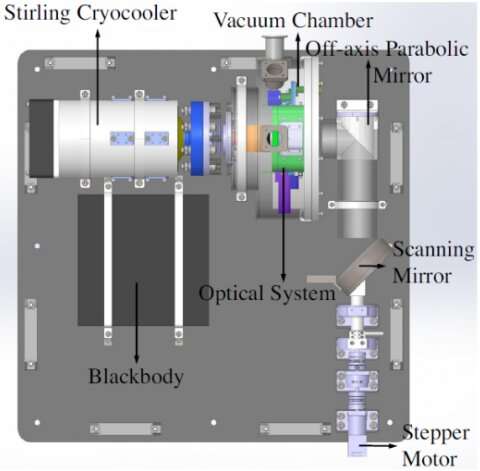Researchers design continuous-scanning sky brightness monitor in 2.5- to 5-μm band

A research group led by Prof. Wang Jian from the University of Science and Technology of China (USTC) of the Chinese Academy of Sciences (CAS) proposed a continuous-scanning near-infrared sky brightness monitor (CNISBM). It can measure 2.5 to 5 μm infrared sky brightness based on an InSb detector and a linear variable filter.
This study was published in Journal of Astronomical Telescopes, Instruments, and Systems on August 13.
Infrared observation is an important method for astronomical research. The level of sky brightness, measured by numerous major astronomical observatory sites in the world, limits the potential of infrared astronomical telescopes and instruments. Thus it is necessary to measure the infrared sky brightness level at an observatory site to evaluate the feasibility of infrared telescopes and instruments.
Due to the absorption of the Earth's atmosphere, ground-based infrared astronomical observations can only be conducted through several observing windows. 2.5 to 5 μm is the beginning of the infrared wavelength and there are two observing windows in the 2.5 to 5 μm band: L and M.
Because the level of sky brightness is extremely weak, the output signal of the InSb detector is lower than nA order and the lock-in amplification technology is used to extract the signal submerged in the noise.
In order to reduce the influence of dark current, the detector is cooled to below -150℃. The chopper and optical system adapted to low temperature were designed to overcome the background thermal noise caused by the instrument.
CNISBM can detect the weak signal of infrared sky brightness and provide valuable information for the design and construction of infrared telescopes and instruments in the future.
More information: Jin-Ting Chen et al, Design of a continuous-scanning sky brightness monitor in the 2.5- to 5-μm band, Journal of Astronomical Telescopes, Instruments, and Systems (2020). DOI: 10.1117/1.JATIS.6.3.036001
Provided by University of Science and Technology of China




















